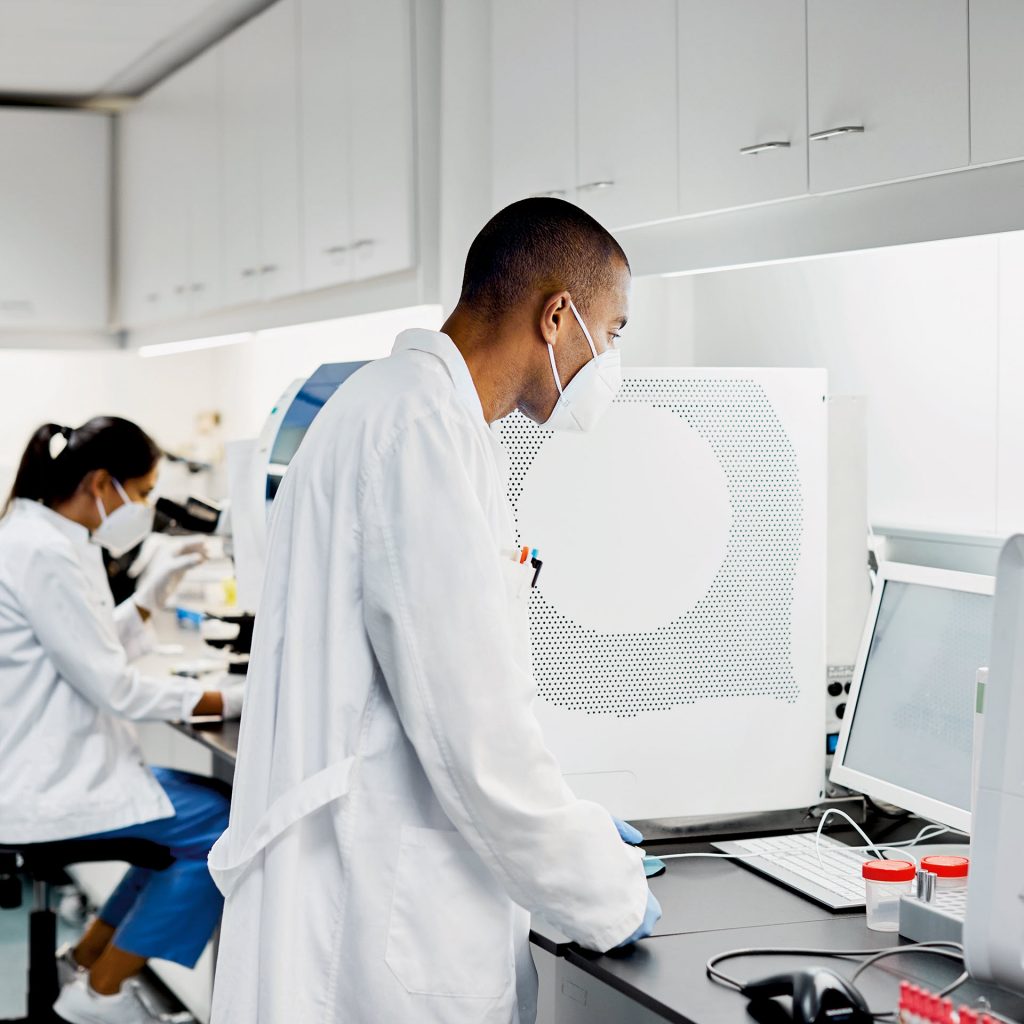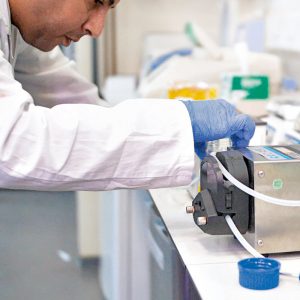A few months ago, we published our 2020 corporate report. In addition to reflecting back on how our business navigated the challenges of one of the most unusual years in history, the report is full of many compelling and inspiring stories. We are pleased to share those with you here. This post focuses on the section Science protects lives.

Reinforced by our October 2019 acquisition of Medidata, 3DS is committed to lead the digital transformation of the life sciences industry, a rapidly-changing sector thanks to the combination of virtual technologies, analytics and artificial intelligence. Our solutions were put to the test amid the COVID-19 pandemic as specialists quickly pivoted to conduct research, clinical development and vaccine production. At the same time, we continued our focus on helping to optimize medical and surgical design and development processes to tailor to individual patient needs. The primary driver behind this is the emerging use of virtual twins of humans to facilitate a better understanding of the complexities in human body. These models enable us to visualize, understand, test, and predict what cannot be seen – from the way drugs affect a disease to surgical outcomes – before a patient is treated.
Here, we’ll share stories of the race for a COVID vaccine, how harnessing data is critical to achieving precision medicine and next-gen medical devices and innovations that improve patient lives; all the result of pursuing our mission to serve the whole healthcare system with the 3DEXPERIENCE platform. Here are some highlights:
The race for a COVID vaccine
The events of 2020 lead to companies around the globe toiling to quickly create a COVID vaccine.

For four years, Israel’s Migal Galilee Research Institute has been using BIOVIA solutions to develop vaccines against avian coronavirus. When the pandemic began, they pivoted to study mutations in COVID-19. Through their digital approach to managing experiments, Migal researchers quickly analyzed data they’d collected over the last four years to model the behavior of viral proteins, leading to understanding new trial results and aiding in the decision for which strategies to focus on in the future.
During trials on its messenger RNA COVID-19 vaccine, Moderna used MEDIDATA’s cloud platform. The trial is one of the largest ever to integrate data captured directly by patients, which reduced attendance at medical centers. The platform’s virtualization allowed participants to use their own devices instead of having to carry a separate device provided by the medical team. MEDIDATA’s technologies for electronic data capture, electronic assessment of clinical results and centralized statistical analysis accelerated the process and laid the groundwork for future clinical trials for revolutionary and successful therapeutic solutions.
Harnessing data to deliver precision medicine
Transitioning to genuine precision medicine will transform how research is conducted and how we think about data. Before COVID-19, clinical care and trials worked on the assumption that the caregiver and patient would be in the same room. The disruption caused by the pandemic created a wave of innovation around virtual trials and new ways of thinking about how research is conducted. The convergence of biological and digital domains is helping create personalized therapies, and the new myMedidata platform can acquire data from various sources to play a major role in patient-centric research. Further, it’s important to protect patient data and confidentiality while also studying connections between patient populations to create novel therapies. What are the considerations around the rise of virtual clinical trials and new ways of acquiring patient consent?
Creating next-generation medical devices
The showcase story of IASO provides an example of how the 3DEXPERIENCE platform can support medical innovations on three levels. First, this reusable, connected and wearable concept product that could deliver new biologic injections was developed using 3D design, collaborative engineering and simulation on the platform. Second, at the manufacturing stage, the platform can help devise new planning and execution solutions to manufacture the product, helping to create the plant of the future. And third, the platform creates conditions for operational excellence by helping to optimize regulatory activities and manage quality by creating a holistic and unified view to improve the patient experience.
Innovations that improve patient lives

The life sciences industry is full of projects that help improve people’s lives, including:
- BioDapt is creating prosthetics to help amputees pursue high-action sports and motorsports, such as snowboarding, skiing, cycling, motocross, driving all-terrain vehicles, strength training, horse-riding and watersports.
- DAMAE Medical helps diagnose skin cancer at an early stage and in real time through a portable imaging device that allows non-invasive 3D imaging of cutaneous tissue.
- LUCID Implants designs, develops, manufactures and sells custom-made craniomaxillofacial and neurosurgical implants to assist in facial reconstruction procedures, helping doctors gain more control over the surgical procedure and improving patient outcome.
- Boston Children’s Hospital cardiovascular surgeon David Hoganson is pioneering the use of virtual twins of patients by modeling their specific complex cardiac configurations prior to treatment, allowing the surgical team to simulate various surgical scenarios as well as help young patients and their families better understand their condition and participate in the treatment plan.

